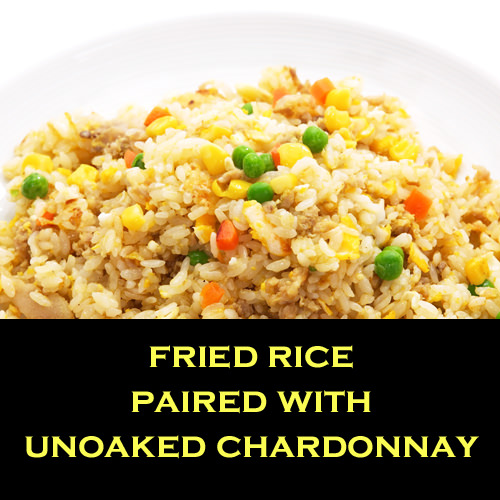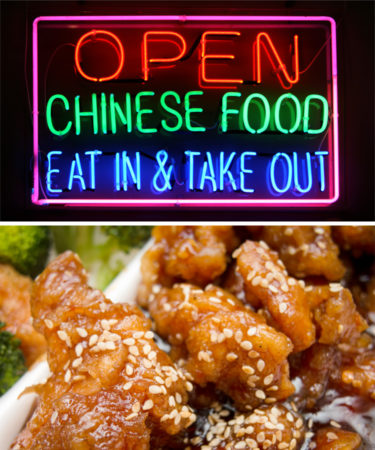For many Americans – specifically Jewish Americans – Christmas Day is not a time for roast ham and turkey, opening presents under the tree and singing carols by the fire, but is instead a time to venture out into the cold and indulge in the annual tradition of eating lots and lots of Chinese food.
The tradition of eating Chinese on Christmas goes back more than a century to New York’s Lower East Side, where three immigrant communities lived in very close proximity to one another: Italians, Jews and Chinese. As we learn from Tablet Magazine, while the Italian restaurants had little appeal to the Jewish Immigrants, since they were not only closed on Christmas day, but also had very little food that could even be considered kosher-style, not to mention images of the Virgin Mary everywhere, Chinese restaurants had no religious iconography to speak of, and cooked using flavors that were familiar sans dairy. And of course, the Chinese restaurants were also always open on Christmas because they didn’t celebrate the holiday either. It was a match made in heaven.
Flash forward to present day and eating Chinese on Christmas has become a major event, for Jews and non-Jews alike. It wouldn’t be the holiday season without a trip to the local Chinese restaurant for lo mein and General Tso’s, and it wouldn’t be a festive holiday season without wine. When thinking about Chinese food, the only wines that are really tough to pair are reds with heavy tannins such as Cabernet Sauvignon. That’s because the tannins can clash awkwardly with the spices, making for an unpleasant melding in your mouth. To help you avoid that, here’s the wine you should drink with some of the most popular Chinese American dishes:
 This is usually a dish with strong soy sauce flavors, so we like a grassy and crisp Sauvignon Blanc to cut right through them.
This is usually a dish with strong soy sauce flavors, so we like a grassy and crisp Sauvignon Blanc to cut right through them.
 This is one of the few classic dishes where a heavier wine works, so here the smooth Malbec goes nicely.
This is one of the few classic dishes where a heavier wine works, so here the smooth Malbec goes nicely.
 This dish can often be a little sweet with soy undertones, so here a nice Lambrusco does well.
This dish can often be a little sweet with soy undertones, so here a nice Lambrusco does well.
 There’s spice, but also a bit of sweetness. We like Gamay to come in with the nice acidity and make everything taste great.
There’s spice, but also a bit of sweetness. We like Gamay to come in with the nice acidity and make everything taste great.
 A little sweet and a little bubbly, Moscato is perfect for drinking along with the fried and breaded dish that’s always smothered in that sticky sweet red sauce.
A little sweet and a little bubbly, Moscato is perfect for drinking along with the fried and breaded dish that’s always smothered in that sticky sweet red sauce.
 Depending on where you’re choosing to dine, this dish could either be served mild, or extremely spicy, so grab a Riesling, which will do the best at calming the heat if you encounter it.
Depending on where you’re choosing to dine, this dish could either be served mild, or extremely spicy, so grab a Riesling, which will do the best at calming the heat if you encounter it.
 This is often the most expensive dish on the menu, and Pinot Noir is often one of the pricier wines, plus the luscious berry flavors combined with Pinot’s acidity do wonders with the fatty duck.
This is often the most expensive dish on the menu, and Pinot Noir is often one of the pricier wines, plus the luscious berry flavors combined with Pinot’s acidity do wonders with the fatty duck.
 While this dish is often spicy, the sauce adds a layer of sweetness, and causes the fruity Grenache to go well.
While this dish is often spicy, the sauce adds a layer of sweetness, and causes the fruity Grenache to go well.
 The roundness of the Chardonnay works with the heavy soy flavors, and by getting one that is unoaked, you avoid the buttery flavors that would clash, instead gaining a crisp acidity that helps cut through the flavors.
The roundness of the Chardonnay works with the heavy soy flavors, and by getting one that is unoaked, you avoid the buttery flavors that would clash, instead gaining a crisp acidity that helps cut through the flavors.
